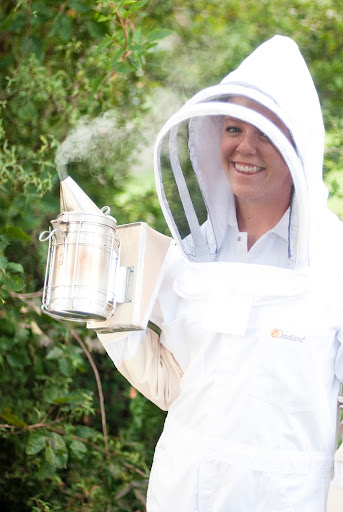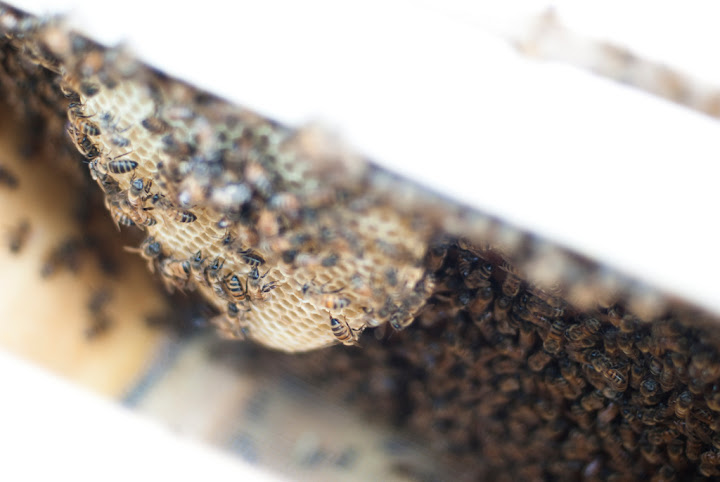It is for the bees…
I wanted to take the time to briefly tell of our progress with our 15 thousand or so ‘girls’ we have in the back yard! Yes, for those who are wondering, the majority of a bee colony is comprised of worker bees who are all female. Just a little tidbit of information for those taking notes! Our first foray into beekeeping has been an incredibly rewarding and challenging experience. It is a very dynamic mix of biology, chemistry, animal husbandry and stewardship of the tiny creatures.
On April 12th I installed a 3-pound box (between 8-10k bees) into a top bar hive I built. A top bar hive is a bit different from the more common Langstroth hives people are more familiar with. Instead of having frames installed in the hive with a comb foundation already created, top bar hives require the bees to build and arrange their own comb by attaching it to the bottoms of the wood top bars. The comb is created by bees “festooning” or hanging from the bars in sheets grabbing on to one another and passing the wax that the bees create on their abdomen to the bees at the top who chew it up and place it. While the process seems rather complicated, its tremendous how quickly they can build, with entire combs being ‘pulled’ in a matter of days.
Since the installment of the package, we now have 12 fully pulled bars, with 2 more in progress. Early on there were some problems with establishment of a brood nest (where all the eggs are laid). While I’m not sure exactly the reasons behind why there was not a very strong build up at the beginning, there was definitely a decrease in population over the first month. Eventually the hive got up and running fully, and probably has between 15-20k bees.
As far as I can tell we have had 3 different queens in the hive. The original packaged queen got superseded within the first 6 weeks. The resulting queen was very quickly replaced, and now we are on our third. On a very exciting note, we have actually seen the queen within the hive this last week! She’s quite large so its a bit astonishing that we have not seen her till now.
Currently it is the hottest part of the summer in Texas and the amount of wildflowers and ornamental flowers blooming is in a dearth season. There will be another honey flow season once things cool down and our second growth season kicks in. I am hoping to really see a build up of comb, brood, and honey this next growth season to make sure they will last through the winter.
Anyway, I figured I would make a note of our first beekeeping season so far in order to not only hopefully entertain our readers, but to keep notes on what we are observing. Rebekah is becoming quite the beekeeper herself and has been able assist me a few times now. Eventually, I hope to have several hives out at the family farm! We also have a couple of clients that want one next spring as well. Could be fun ![]()
Here are a few photos from our last hive inspection…

Rebekah with her smoker!

Lots of bees
August 14th, 2010 at 8:36 am
Is there a way you can harvest honey from a top bar hive? It seems like you couldn’t stack them (at least, all the pictures I’ve seen they are trapezoidal), so you wouldn’t be able to separate out the brood comb from the honey.
August 15th, 2010 at 7:30 pm
Yes, you can absolutely harvest honey from a TBH. Think of a top bar layout like a horizontal Langstroth (stacked boxes) hive. Typically, they will consolidate the brood nest to certain bars, and store honey on on the outsides of the brood nest. There is little need for a queen excluder.